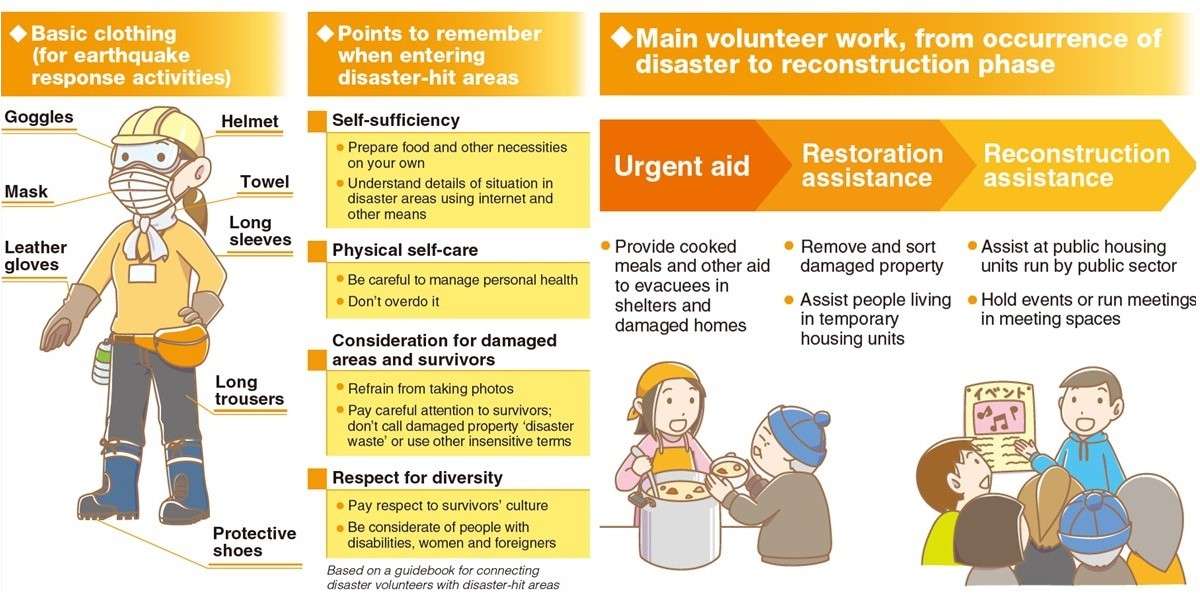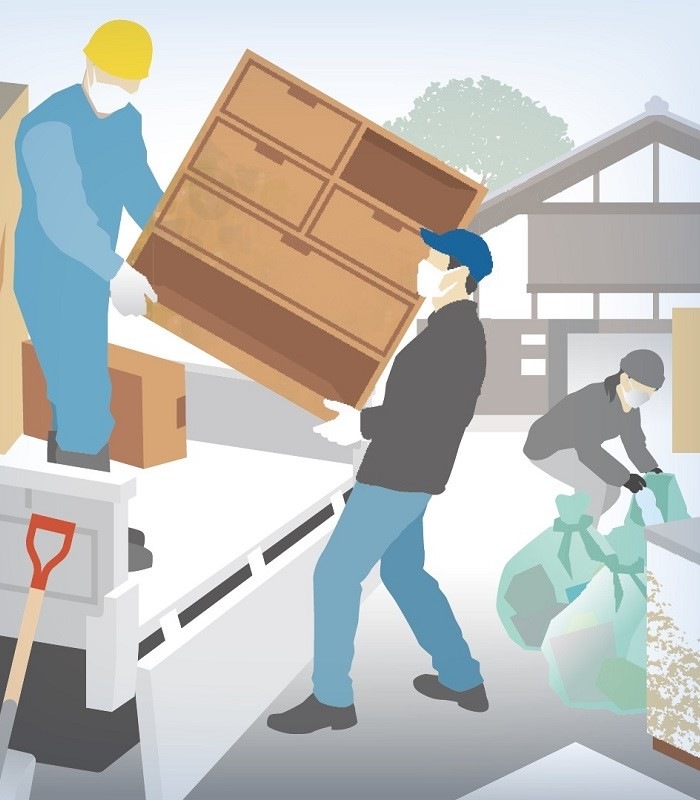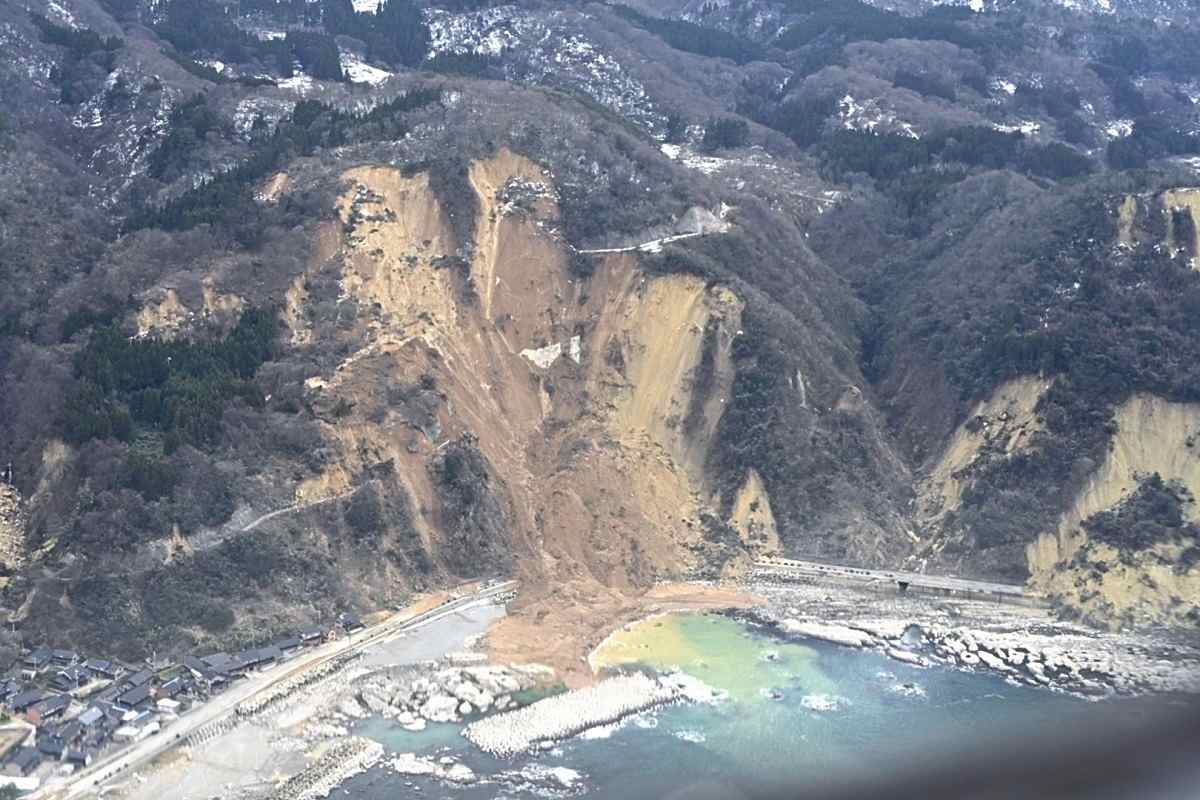Volunteers clean up houses damaged by the Noto Peninsula earthquake that occurred in Anamizu City, Ishikawa Prefecture in February.
May 13, 2024 12:02 (Japan time)
When a large-scale disaster occurs, volunteers are essential to support disaster victims during the recovery and reconstruction process. Volunteers are actively working on recovery efforts in the areas affected by the Noto Peninsula earthquake that occurred on January 1st. On this page, we will use Taro’s fictional scenario to consider the mental attitude required when participating in volunteer activities in the event of a large-scale disaster.
***
Participating in disaster volunteer activities
- Information gathering
- ●Please check the website of the National Social Welfare Council for recruitment periods and disaster-stricken areas.
- preparation
- ● Prepare essentials such as clothing, medicine, and insurance cards.
- ● Take out volunteer insurance
- Activities in the disaster area
- ●Register at the Disaster Volunteer Center

“Is there anything I can help you with?”

Taro, a 20-year-old college student living in the Kanto region, was watching TV on his day off. Two months ago, a major earthquake occurred in a far away area, and the TV showed the affected area strewn with rubble. Taro was moved by the plight of disaster victims still living in evacuation centers, and felt a desire to do something to help.
The news reported that volunteers were being sought in the disaster area. “The university is on spring break. Maybe there’s something I can do,” Taro thought. He searched the internet, found an opening for volunteers to help clean up the site, and immediately applied.
Sudden back pain while moving furniture
In the disaster-stricken area, the volunteer activities that Taro participated in were carried out in groups of five, and Taro was the youngest. Confident in his physical strength, Taro accepts the job of transporting heavy furniture from a destroyed house.
Towards the end of the morning’s work, as I was loading a large shelf into my pickup truck, I suddenly felt a sharp pain in my back and couldn’t move. Employees of the local social welfare council, which was coordinating the volunteers, transported him to the hospital. There, he was diagnosed with severe back pain and was forced to abandon his volunteer activities that afternoon. “He had no choice but to be treated at the local hospital that came to rescue him,” Taro said, filled with regret.
Revisiting disaster-stricken areas and participating in activities
Taro learned about the activities to support community development using temporary housing, and returned to the disaster area as a volunteer during his summer vacation. He thought that his experience serving customers in restaurants would be useful for this volunteer work.
Taro helped organize a tea and chat session at a community center in the temporary housing area. He prepared tea, coffee, and snacks, and many elderly people participated. After the pleasant chat, he expressed his gratitude and said, “I felt relieved to be able to talk about my concerns.”
Recovery from the disaster seemed like a long way off. Moved by this experience, Taro decided to return to the area as a volunteer during his next long vacation.
◇◇◇
The scope of disaster volunteer activities is extremely wide. There are many jobs to be done, including clearing debris, clearing mud, helping people move, sorting relief supplies, and distributing soup kitchens.
There is also heavy lifting, desk work, and psychological support.
Disaster volunteer centers are operated by municipal social welfare councils and oversee the acceptance of new volunteers.
For new volunteers looking to lend a hand, it’s important to consider both the situation on the ground and current volunteer demand.
The latest information can be found on the National Social Welfare Council’s website and SNS. You should avoid directly calling local governments and public institutions in the disaster area.
A basic premise when participating in relief efforts is that volunteers must procure their own needs, that is, be self-sufficient.
The kind of supplies and clothing you will need will vary depending on the type of relief effort and the season. For example, jobs that involve physical labor require clothing that completely covers the skin.
Volunteers must also properly manage their own health as there is a risk of secondary disasters.
Shingo Kobayashi, an executive with the Tokyo-based non-governmental organization Peace Boat Disaster Relief, said: “Volunteers take on tasks that they don’t normally do. I want them to take care of their physical condition as they work.”
It is important to take out volunteer insurance before starting work to prepare for any unexpected accidents. Volunteers can apply for this type of insurance at their local social welfare council.
empathetic approach
Once in the disaster area, the process typically begins with volunteers registering at a disaster volunteer center and being briefed on the details of the relief effort.
We then move to the site and begin work. This may include things like removing damaged furniture.
Once the work is completed, the volunteers will report to the center staff on the progress of the work and the condition of the surviving victims.
Fuminori Matsuyama, an executive with the Nagoya-based organization Shinsai ga Connect National Network, which connects nonprofit organizations across the country, says: It is important to proceed at a pace tailored to the surviving victims and based on their judgment of what to prioritize, for example. ”
Volunteers must also be empathetic towards disaster victims, and must always be aware that, for example, carelessly calling damaged furniture or belongings “disaster waste” may hurt the feelings of disaster victims. Have to.
long term activity
Volunteer activities are divided into three stages: emergency support, recovery support, and reconstruction support.
Transportation routes were cut off during the Noto Peninsula earthquake, and volunteers were not recruited during the initial emergency relief phase. Instead, support activities were carried out by NPOs with specialized knowledge.
Now that relief efforts have moved to the reconstruction support stage, Ishikawa Prefecture is recruiting volunteers from outside the prefecture and dispatching them to the disaster-stricken areas.
Much of the work involved removing various items from damaged houses and transporting them to temporary storage sites.
Mr. Kobayashi said, “Support activities continue for a long time.I hope that volunteer activities will fit into the type of work that needs to be done and their schedules.”
◇◇◇

On January 29, a landslide occurred in Suzu City, Ishikawa Prefecture, causing roads to be closed and debris flowing into the sea, as seen from a Yomiuri Shimbun aircraft.
The horror of the Noto Peninsula earthquake was clear. On January 29, I boarded a Yomiuri Shimbun aircraft and flew to the peninsula in Ishikawa Prefecture to observe from the air the situation in areas that were heavily damaged, such as Suzu City and Wajima City.
The landslide left scars on the hill. Earth, sand and stones that had collapsed due to the tremor rolled down and blocked the road. I was speechless at the graphic destruction caused by the earthquake.
I had been assigned to write an article about landslide dams, which are formed when debris from a landslide blocks a stream or river. I accompanied Susumu Yasuda, professor emeritus of Tokyo Denki University, who was conducting a field survey from the air.
“This is really terrible,” said Yasuda, a leading researcher on land disasters such as liquefaction and landslides. The scale of the landslide and the enormity of the damage seemed to surprise even Professor Emeritus, who has been studying landslides for half a century.
While the plane was returning home after flying over the disaster area, I immediately began typing my article. We avoided using jargon as much as possible and instead focused on simpler language that is easier to understand for the average reader. That is the basic job of a newspaper reporter. But the words just didn’t flow easily from my fingertips to the computer in my lap, and I had a hard time getting through the article.
Perhaps Mr. Yasuda could not bear to see me working so hard to complete the sentence, so he leaned over from the seat next to me and kindly offered me some advice. After I thanked Mr. Yasuda for his helpful suggestions, he spoke again. Professor Yasuda said, “It is extremely important to return the results and new knowledge obtained through research and surveys to society and use them for disaster prevention and mitigation.” “However, it is true that it is not easy. I have high hopes for young reporters like you.”
An article about Yasuda’s aerial survey of the disaster area in the Yomiuri Shimbun Evening Edition published on January 30 stated that there were concerns that “large-scale aftershocks could cause some dams to burst.”
March 11th marks 13 years since the 2011 Great East Japan Earthquake. Days have passed since the Noto Peninsula earthquake that occurred on New Year’s Day, and I feel that interest in disaster prevention is increasing. However, there are concerns that the memory of this disaster will fade over time.
Has this article raised Yomiuri readers’ disaster prevention awareness? Will it lead to fewer lives lost in future disasters? While constantly asking myself these questions, I have persistently written multiple articles on this issue, urging readers to prepare for the “next disaster.” I accompanied Mr. Yasuda on his coverage of the Noto earthquake and renewed my determination to continue this work.
